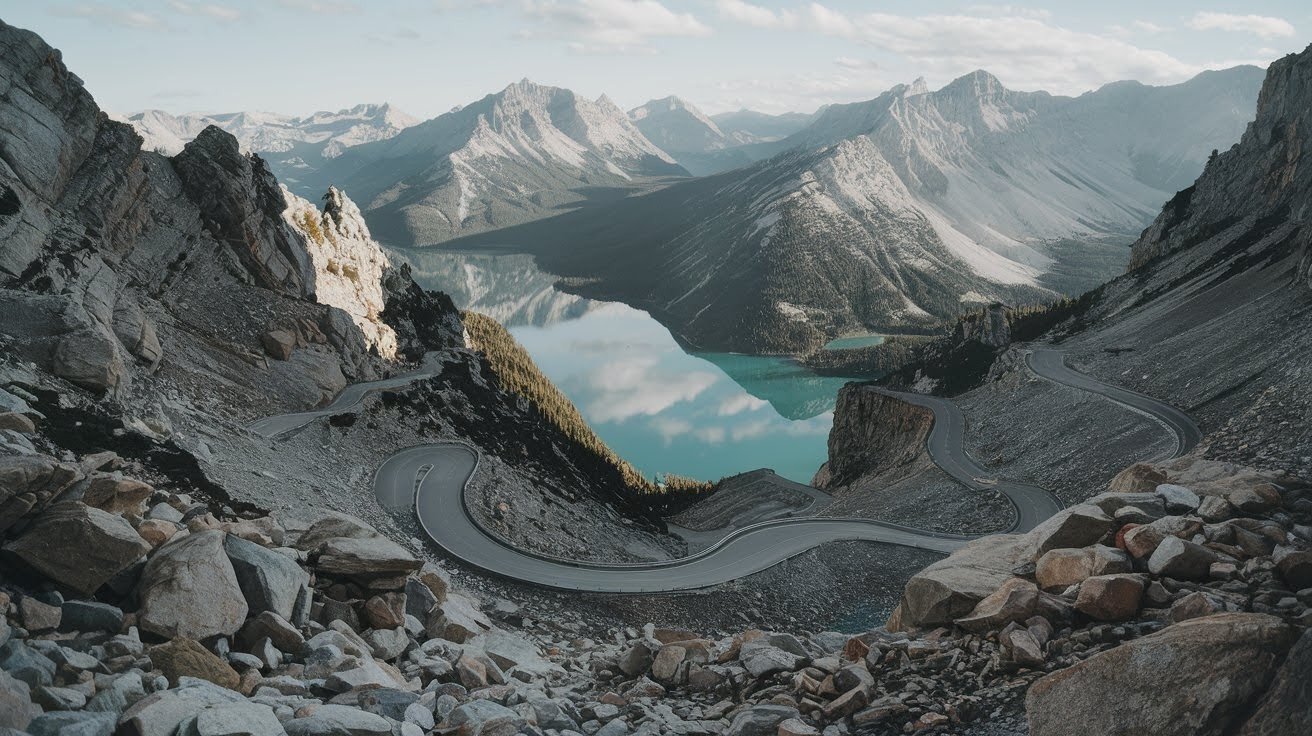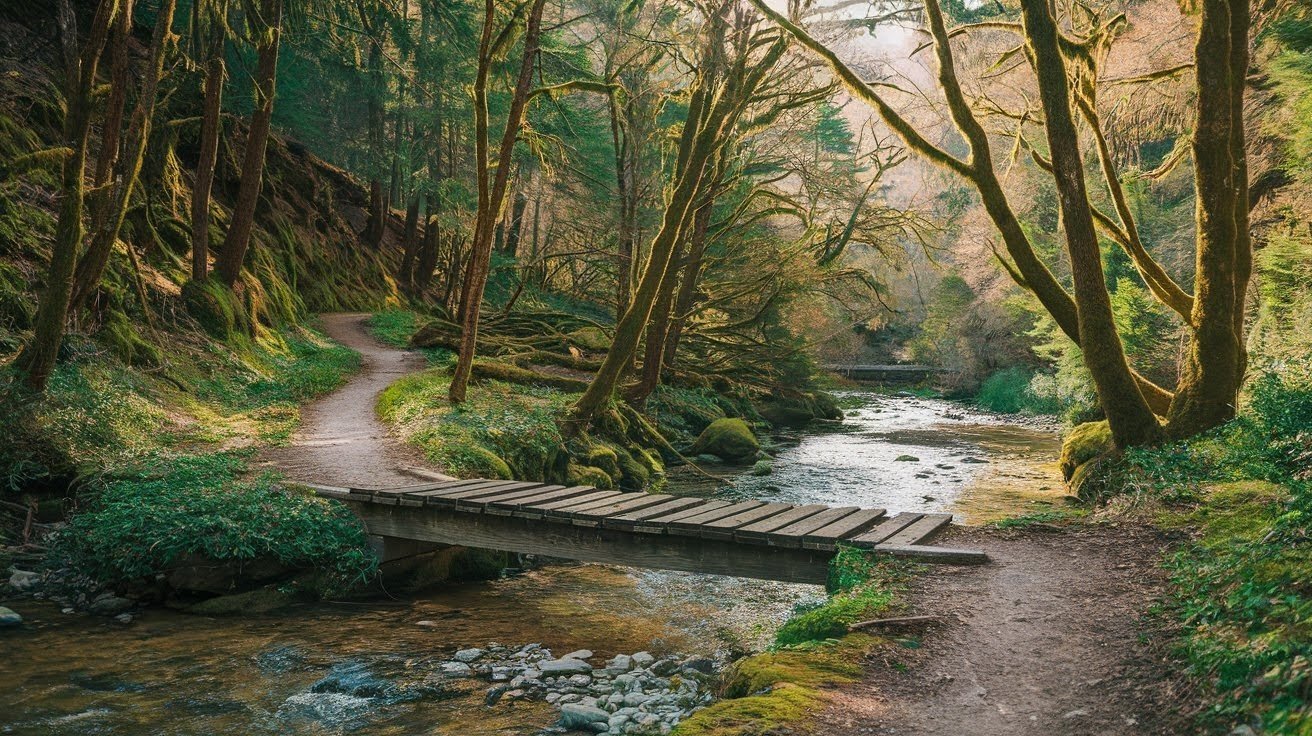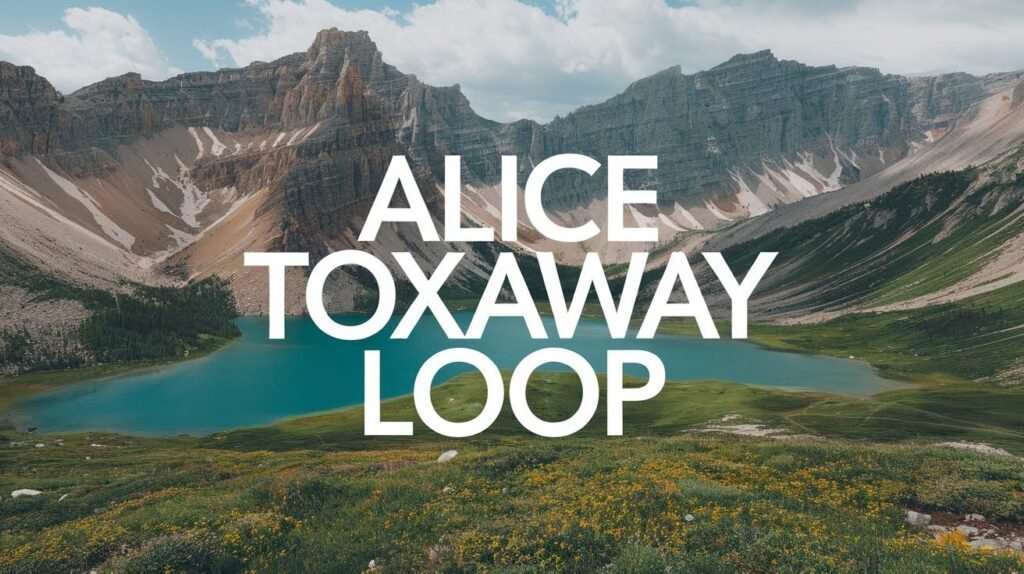The Alice Toxaway Loop stands as one of Idaho’s most rewarding backpacking trails. This challenging circuit takes you through the heart of the Sawtooth Wilderness, connecting two pristine alpine lakes with mountain views that will leave you speechless.
Located just three hours from Boise, this 18-21-mile loop offers the perfect escape from city life. The trail winds through wildflower meadows, past granite peaks, and alongside crystal-clear mountain lakes.
At a Glance:
- Distance: 18-21 miles
- Elevation Gain: 3,000-4,100 feet
- Duration: 2-3 days
- Difficulty: Hard
- Permits: Free (self-issued)
- Dogs: Allowed on leash
Planning Your Trip
Planning makes the difference between a good trip and a great one. The Sawtooth Wilderness requires preparation, but rewards come to those who do their homework.
Location and Access
The Alice Toxaway Loop sits in central Idaho’s Sawtooth Mountains. From Boise, drive north through Lowman and Stanley to reach the trailheads. Two main starting points serve this loop: Tin Cup (near Pettit Lake) and Yellowbelly.
The drive takes about three hours from Boise. Stanley serves as your last supply stop before hitting the trail. Stock up on food, fuel, and any forgotten gear here.
Best Time to Visit
July through September offers the best hiking conditions. Snow blocks high passes until mid-July most years. September brings cooler nights but fewer crowds and changing aspen leaves.
The weather changes quickly in the mountains. Even summer nights can drop below freezing at high camps. Always check current conditions before leaving home.
Permits and Rules
Good news: no advance permits are needed. Simply fill out a free wilderness permit at the trailhead. But rules still apply to protect this special place.
Camp at least 200 feet from lakes and trails. Campfires are banned above 10,000 feet. Pack out all waste, including human waste, in the provided waste bags.
Backpacking Tips and Essentials
Success on the Alice Toxaway Loop comes down to smart preparation. These mountains demand respect, but proper planning keeps you safe and comfortable.
Trail Conditions and Wildlife
Summer crowds flock to Alice and Toxaway Lakes, but plenty of campsites remain available. Download offline maps before you go – cell service is spotty at best. Trails are well-marked but long, with steep sections that test your fitness.
Black bears call these mountains home, along with mountain goats and curious marmots. A bear canister protects your food and keeps wildlife wild. Bear spray adds another layer of safety.
Essential Gear List
Your backpack should include the basics: a tent, a sleeping bag rated for 20°F, an insulated sleeping pad, and a water filter. A reliable stove, fuel, and cookware handle your meals. Trekking poles help on steep sections.
Don’t forget the small stuff that makes big differences. Wag bags for waste disposal, a headlamp with extra batteries, a first aid kit, and layers for changing weather. A good rain jacket can save your trip.
Where to Stay Before and After
Pettit Lake Campground offers the closest camping to trailheads. Free dispersed camping is available nearby if the campground fills up. Both options put you minutes from the trail.
Stanley provides comfortable lodging options. Mountain Village Lodge and Redfish Lake Lodge offer rooms and meals. Ketchum, though further away, has more hotel choices for those wanting luxury before or after the hike.
Trail Guide: Step by Step
The Alice Toxaway Loop can be hiked in either direction. Most people go clockwise, hitting Alice Lake first. But counterclockwise works too, starting with Toxaway Lake.
Trailhead to Alice Lake

From Tin Cup Trailhead, the trail climbs steadily through forest and meadows. Petit Jean Lake appears after 3 miles – a good rest stop before the final push. Alice Lake sits 6-7 miles from the start, gaining 1,600 feet along the way.
Alice Lake offers incredible views of El Capitan’s granite face. Swimming is possible, but cold even in summer. Several good campsites sit above the lake’s north shore, following wilderness camping rules.
Alice Lake to Toxaway Lake

The trail from Alice to Toxaway is the loop’s most challenging section. A steep climb leads to Summit Pass, gaining 900 feet in 2 miles. Views from the pass make every step worthwhile.
The descent to Toxaway Lake passes through alpine terrain that few hikers ever see. Toxaway Lake is larger than Alice, with more camping options scattered around its shores. This peaceful spot makes a perfect base camp.
Return to Trailhead

The final leg follows Toxaway Creek back toward Pettit Lake. This 7-8 mile section descends gradually through forest and meadows. Several stream crossings keep things interesting, especially in the early season.
An alternative route exists via the Yellowbelly trailhead. This option adds Farley Lake and Edith Lake to your trip. Extra miles and elevation make this choice better for 3-day trips.
Recommended Itineraries
Your schedule and fitness level determine the best itinerary choice. Here are proven options for different trip lengths and goals.
Two Days, One Night
Day one takes you to either Alice or Toxaway Lake for camping. Day two includes the other lake before heading home. This tight schedule requires good fitness and light packing. Start early and expect long days on the trail.
Choose Alice Lake first for easier water access and more camping options. Start with Toxaway if you prefer the bigger, more peaceful lake setting.
Three Days, Two Nights
Extra time allows for rest and exploration. Spend night one at Alice Lake, night two at Toxaway Lake. Day three brings you back to the trailhead refreshed instead of rushed.
Alternative three-day routes include side trips to Edith Lake or extended stays at one base camp. The extra day makes photography and fishing possible.
Day Hike Option
Strong trail runners complete the loop in 9-12 hours. This 20-mile challenge requires excellent fitness and alpine running experience. Start before dawn and carry minimal gear – just water, food, and emergency supplies.
Beyond the Loop
The Sawtooth Wilderness offers many other trails worth your time. Once you complete Alice Toxaway, these options await your next visit.
Other Sawtooth Hikes
Sawtooth Lake Trail provides easier access to alpine scenery. Goat Lake offers solitude with fewer crowds than the popular spots. Bench Lakes creates a nice alternative for families with kids.
Each trail has its character and challenges. Start with day hikes to learn the area before committing to longer backpacking trips.
Additional Activities
Natural hot springs near Stanley provide perfect post-hike relaxation. The Salmon River offers rafting and fishing opportunities. Local outfitters provide horseback riding for those wanting to see the mountains differently.
Stanley’s restaurants and bars welcome hungry hikers back to civilization. The small town atmosphere feels perfect after days in the wilderness.
Conclusion
The Alice Toxaway Loop ranks among Idaho’s finest backpacking experiences. Two pristine alpine lakes, towering granite peaks, and peaceful wilderness campsites create memories that last forever.
Success depends on good planning and proper gear. Free permits make access easy, but mountain weather and terrain demand respect. Choose your itinerary based on fitness level and available time.
This trail works for both new backpackers and experienced hikers. The scenery rewards every step, from wildflower meadows to mountain reflections in still lake waters. Follow Leave No Trace principles to preserve this special place for future visitors.
Pack your sense of wonder along with your gear. The Sawtooth Wilderness delivers experiences that photos can’t capture and words struggle to describe.
Frequently Asked Questions
Do I need permits for the Alice Toxaway Loop?
No advance permits required. Simply fill out a free wilderness permit at the trailhead before starting your hike.
Can I complete this trail as a day hike?
Yes, strong hikers can complete the 20-mile loop in 9-12 hours. Start very early and carry minimal gear for safety.
When is the best time to hike Alice Toxaway Loop?
July through September offers the best conditions. Snow blocks high passes until mid-July in most years, making earlier attempts difficult.
Are campfires allowed on the trail?
Campfires are banned above 10,000 feet in elevation. Bring a camp stove for cooking and warmth instead of planning on fires.
What wildlife should I expect to see?
Black bears, mountain goats, and marmots are common. Carry bear spray and use proper food storage methods throughout your trip.

